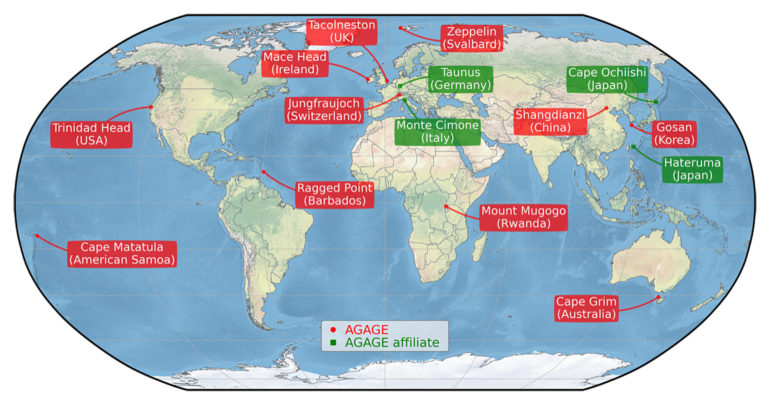An international team of researchers has located the source of recently discovered ozone damaging HCFCs in the atmosphere. In their paper published in Proceedings of the National Academy of Sciences, the group describes using new tools in addition to those used by members of the Montreal Protocol to discover and trace ozone-damaging chemicals emitted into the atmosphere.
Back in the mid-1980s, scientists discovered that some types of human-created air pollution were damaging the ozone layer, a layer in the stratosphere containing high levels of trioxygen that blocks harmful UV rays from the sun. The damage came to be known as the “ozone hole.” Since that time, scientists have worked with governments and industries to stop such emissions—efforts that have worked quite well, as the size of the hole has been dramatically reduced.
One of those efforts was the creation of the Montreal Protocol in 1987—a pact between nations agreeing to limit or stop emitting ozone-damaging chemicals. The pact led to the building of air quality testing centers around the globe. Two years ago, members of the team manning one of the test station found a new source of ozone-damaging chemicals that had never been seen in the atmosphere before—HCFC-132b, a hydrochlorofluorocarbon compound. It was added to the list of two other chemicals that have been detected at testing stations—HCFC-133a, and HCFC-31. In this new effort, the researchers traced the emissions back to their source.
The researchers found that both HCFC-132b and HCFC-133a were coming from two different areas in China. HCFC-31 had been previously traced to China. The researchers also found that emissions traced to France several years ago had stopped at the same time a chemical plant in France was shut down.
The researchers note that all three sources are considered to be far less damaging than the chemicals that were involved in creating the ozone hole—new, more sensitive sensors are able to detect chemicals in parts per trillion, as opposed to billions or even millions, just a few years ago.
The researchers will continue working to trace the emissions to the factories involved and engage with those businesses or their government to put a stop to them.
Recent rise in CFC emissions could delay ozone hole healing by almost 20 years
More information:
Martin K. Vollmer et al. Unexpected nascent atmospheric emissions of three ozone-depleting hydrochlorofluorocarbons, Proceedings of the National Academy of Sciences (2021). DOI: 10.1073/pnas.2010914118
2021 Science X Network
Citation:
Sources of new ozone-damaging HCFCs traced back to origins (2021, January 29)
retrieved 31 January 2021
from https://phys.org/news/2021-01-sources-ozone-damaging-hcfcs.html
This document is subject to copyright. Apart from any fair dealing for the purpose of private study or research, no
part may be reproduced without the written permission. The content is provided for information purposes only.



